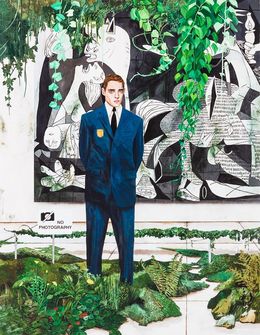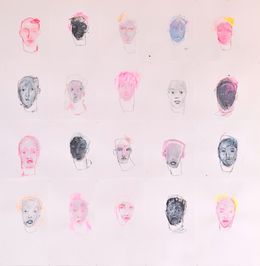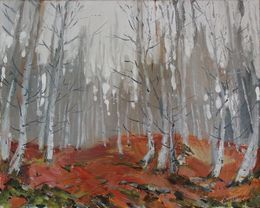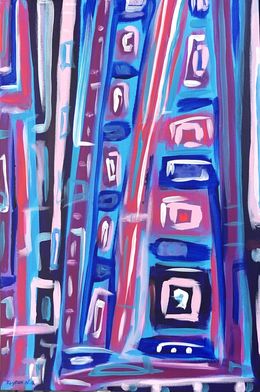
How can Abstract Expressionism be defined?
From Mark Rothko‘s monochromes to Jackson Pollock‘s chaotic paintings… Abstract Expressionism encompasses artists that, at first glance, seem to have nothing in common in their ways of painting. This art movement born in New York after the Second World War propelled its American figures onto the international scene – and lead to the dethronement of Paris as capital of the art world. Today, the artists of this movement feature amongst the biggest stars of the art market… But, before Abstract Expressionnism was even met with such success, how did it appear ? What are its characteristics and why is it so enticing ?
An all-American art form

Because of its monumental scale, romantic mood and claims to individual freedom, Abstract Expressionism defines itself as the American art form. In the case of Franz Kline, this “americanhood” transpires even in the themes he explores, that is train wagons, a symbol of American modernity. Indeed, it is this whole dimension of Abstract Expressionism that partly explains that it was so well perceived by American critics. Moreover, some historians even go to such lengths as saying that the CIA actually financed artists of the movement in the context of the Cold War. Eager to affirm American power in front of the Soviets and also Europe, the CIA would have seen in Abstract Expressionism a contraption to promote the United States’s cultural hegemony.
Painting as medium of predilection

Despite some works in sculpture (John Chamberlain) and photography, Abstract Expressionism rhymes with painting. One of the key points of Abstract Expressionism is the search for new means to express one’s self. Hence, painting was the medium that offered the most possibilities in regards to this. Jackson Pollock thus invented what would later be called action painting, a technique that consists in applying paint to canvas not with a paintbrush but rather by dripping or throwing it, in such a way that the gesture of the artist is at the very heart of the artwork. Willem de Kooning was close to Pollock in his spontaneous painting and brushstrokes. In another procedure with yet the same goal to bring out what’s inside, Mark Rothko took interest in color field, that is the choice to flood the canvas with one color in a quest for the sublime rather than beauty. This technique he shared with Barnett Newman was to turn the work into a sort of spiritual experience or, at least, like the paintings of Pollock, to allow the viewer to look inwards…
An art form that finds its inspiration in surrealism

In its relation to self-expression , Abstract Expressionism is rooted in surrealism and the European avant-garde of the beginning of the 20th century. This explains the great interest of these painters for myths, symbols and archetypes. Abstract Expressionism can be considered as the equivalent of surrealism in the post-war world. The 2 movements encourage a sorte of return to the self in front of the horrors of the outside world. Undeniably their pictorial vocabularies are very distinct, one being definitely figurative the other absolutely not. Yet from a philosophical point of view and in terms of context, surrealism and Abstract Expressionism have a lot in common.
Abstract but mostly expressive works

In a context where the United States was experiencing unprecedented economic growth while being affected by a great paranoia concerning communism, making expressionist art made total sense. On the canvas, freedom and controversy were welcome. The artwork was supposed to reflect the true identity of the artist… Therefore, the artist’s gesture is very important in the way it traces a creative process that is his or her very own. The authenticity of the work is based on its ability to have an immediate impact and to reveal a profound feeling, that of the artist that painted it. Abstract Expressionists’ project was to free themselves from memory, understand memory of the images of European paintings, to create their own language, visually abstract but full of meaning in essence. The goal was not to produce grandiose works of art but simply intimate and personal ones.
In the end, Abstract Expressionism allowed the American artistic scene to be considered as such fully. Indeed, it is this movement that put into question the historic – and up until then undisputed – domination of European art groups. It stemmed from the desire of a group of American artists to find a way to express themselves that would be their own rather than inherited. An art form that would give them absolute freedom in which the only rule was to paint from the inside…

About Artsper
Founded in 2013, Artsper is an online marketplace for contemporary art. Partnering with 1,800 professional art galleries around the world, it makes discovering and acquiring art accessible to all.
Learn more













